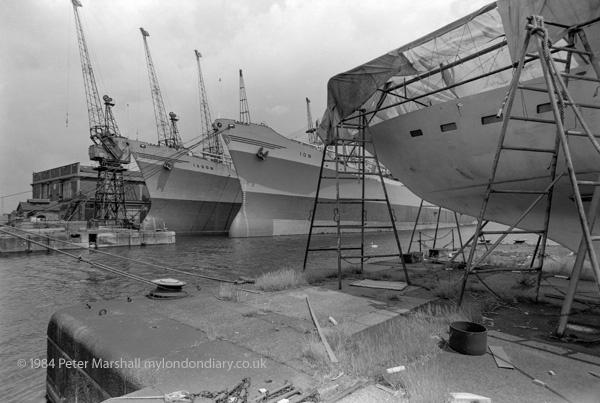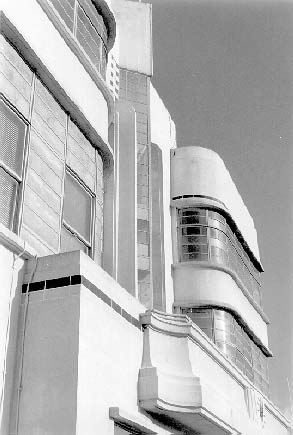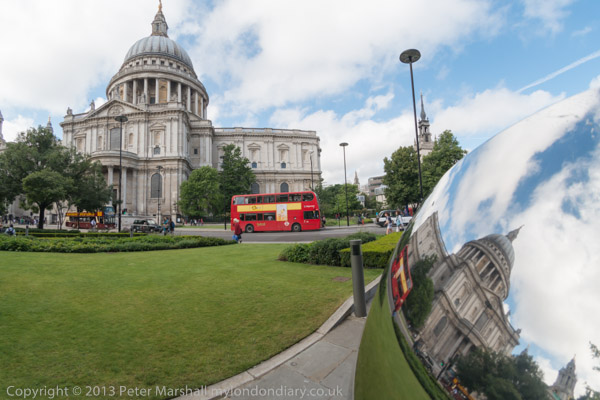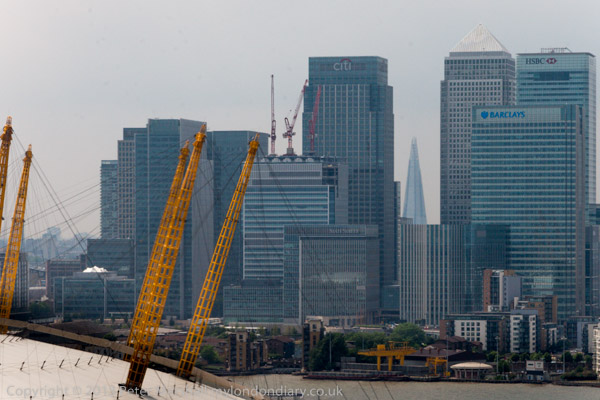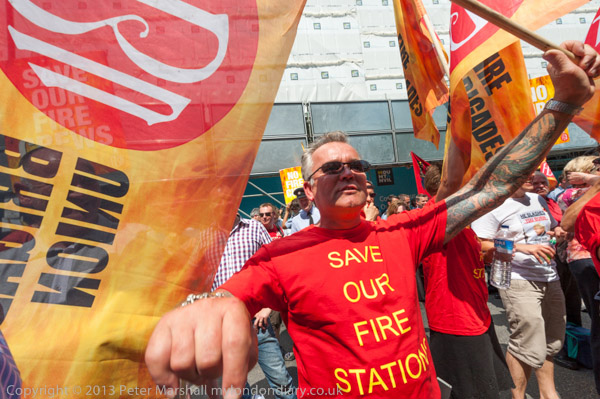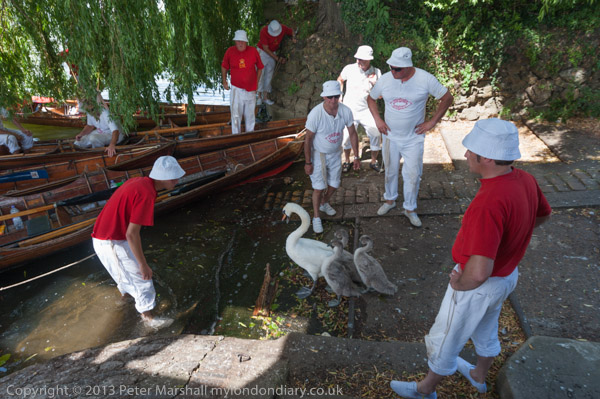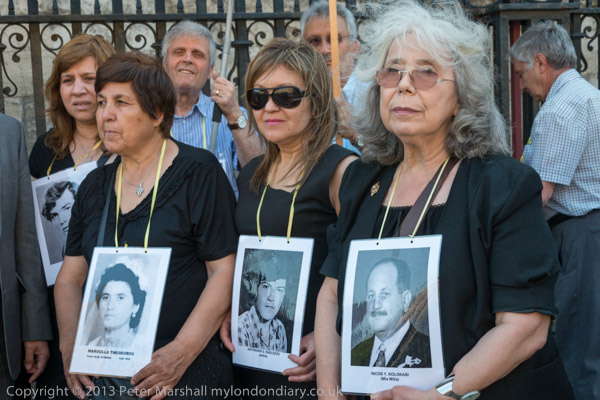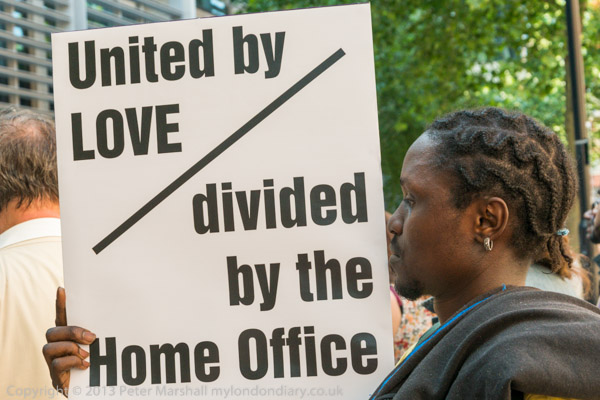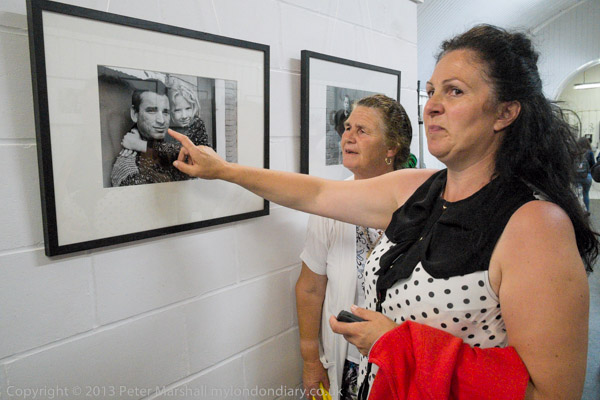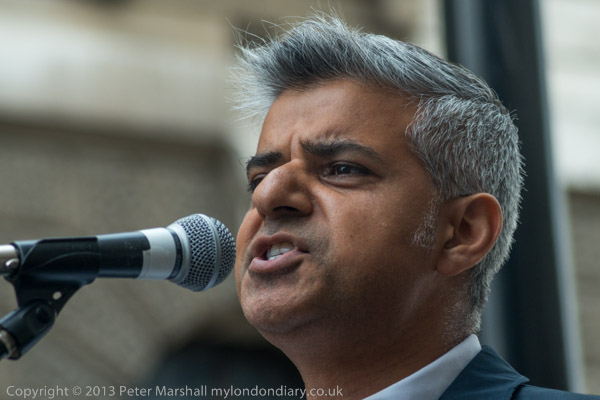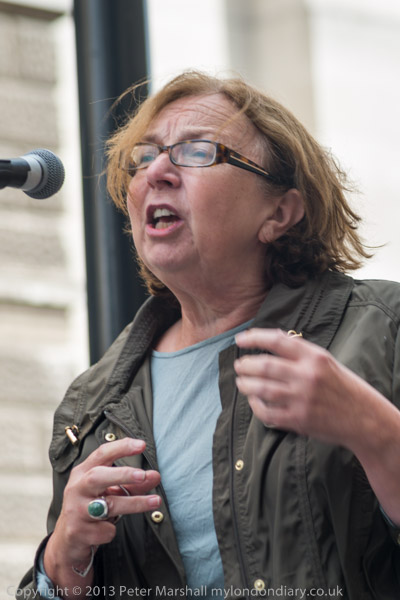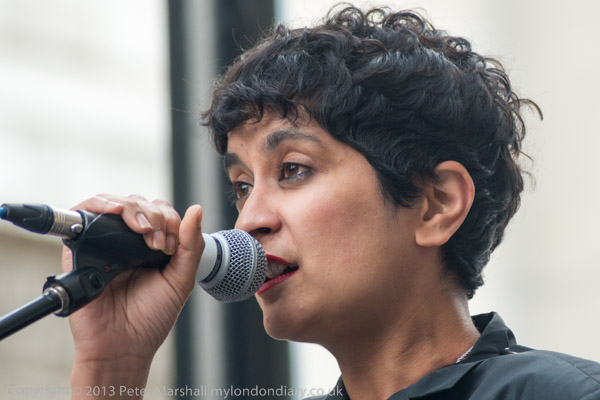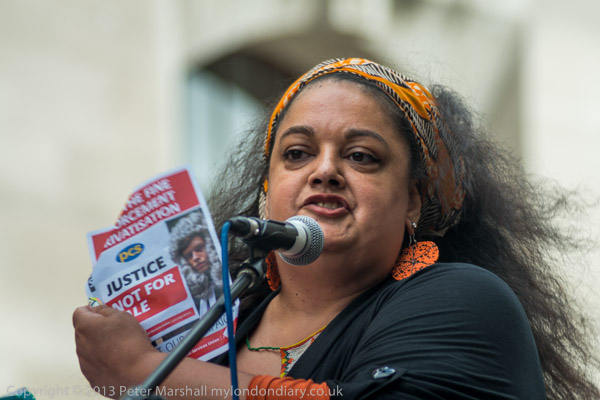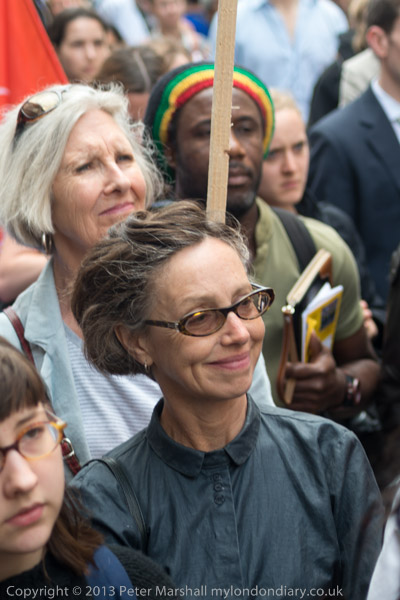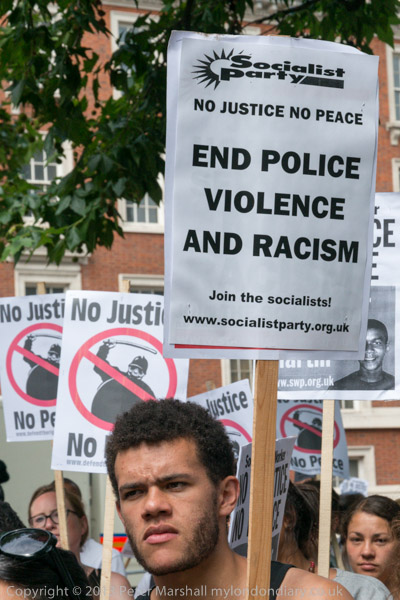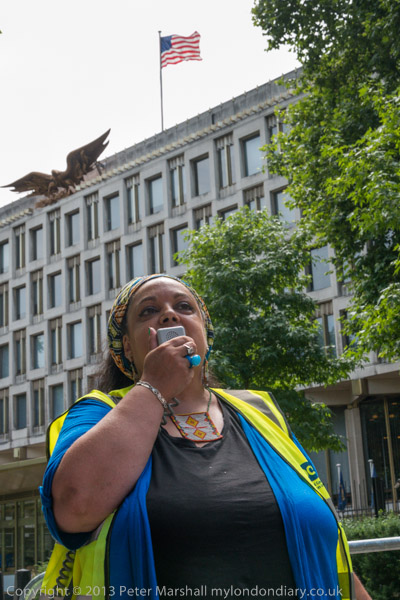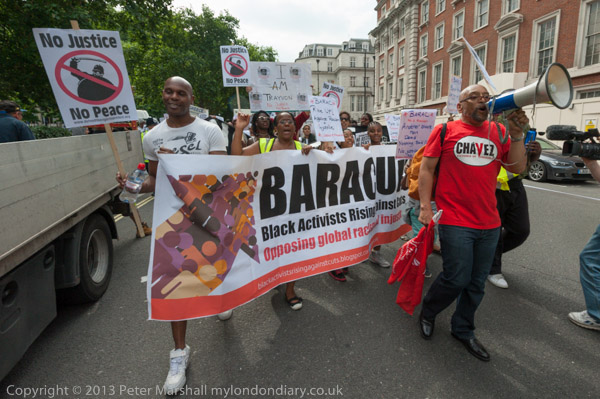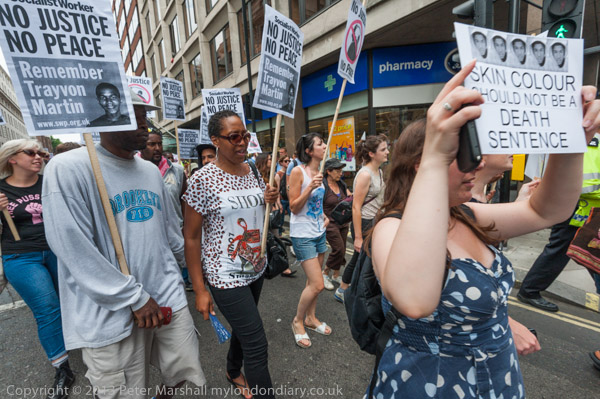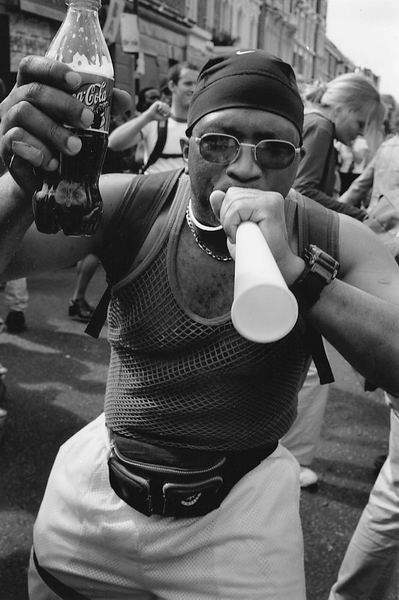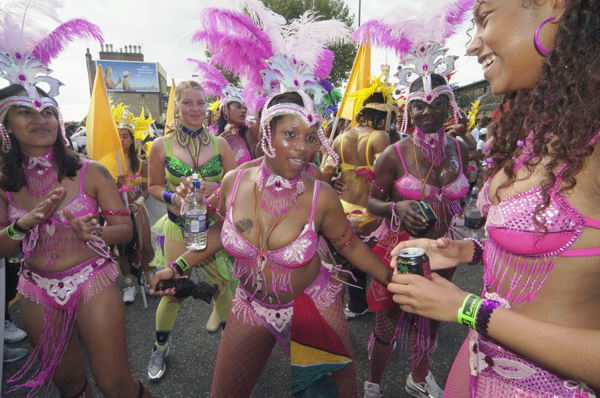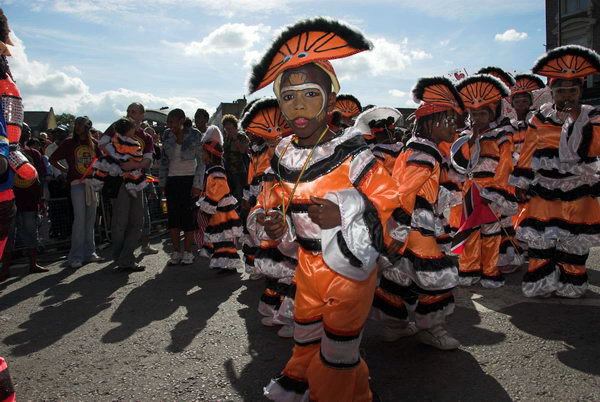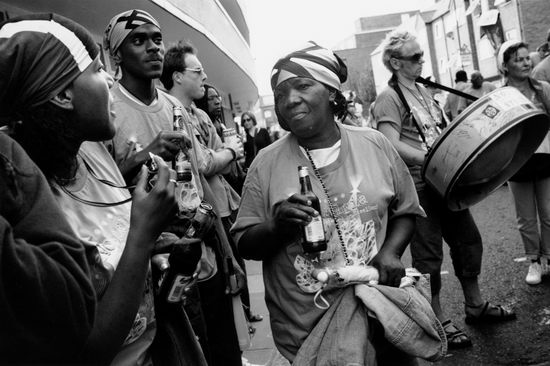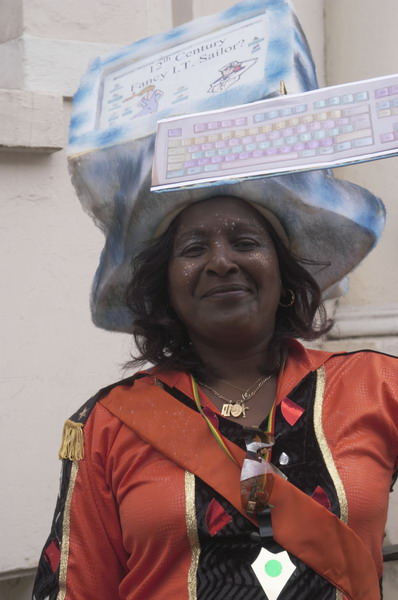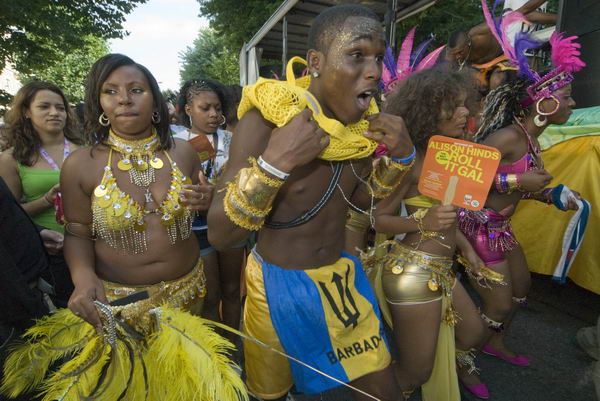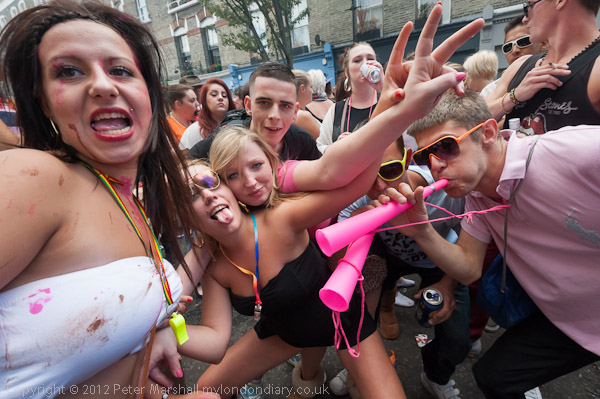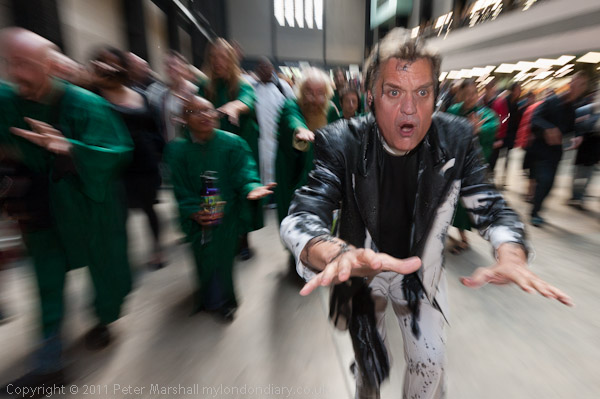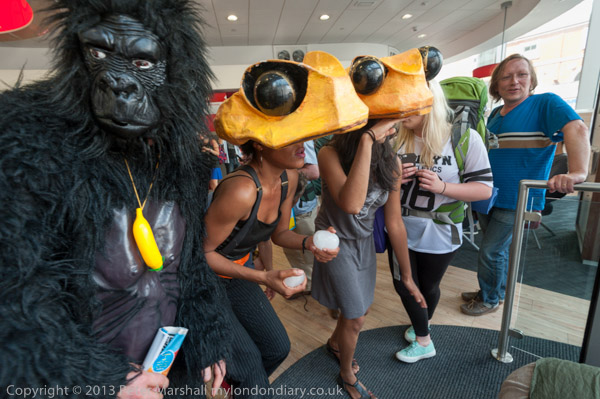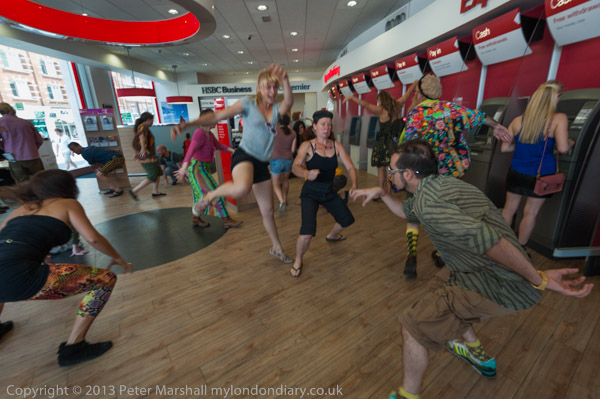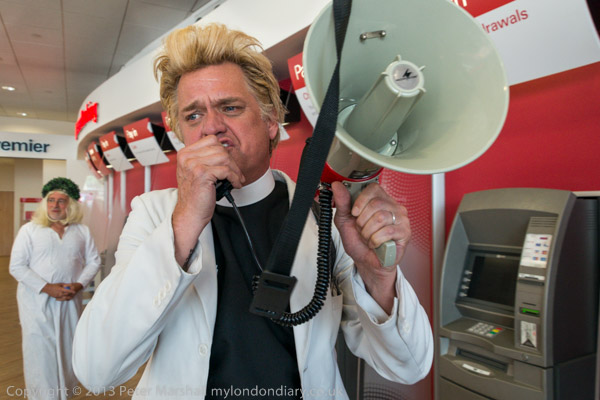August 1st seems a very long time ago now, but aspects of it came back to me as I struggled to correct the images in Lightroom today. Since then I’ve had two very busy holidays with groups of friends, the first in Edinburgh for the festival, and the second in Yorkshire, just for the heck of it. Away from London I missed a lot of what was going on, though I did arrive back just in time to cover Saturday’s large protest against US intervention in Syria, and I’ve been quite busy since then.
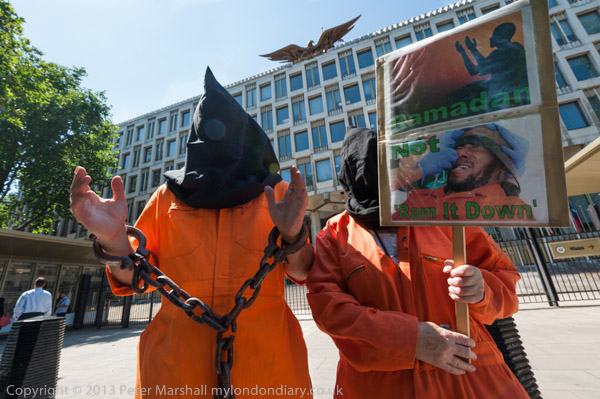
But back a month, and on the first day of August I had a couple of events to photograph. The first was the regular monthly Shut Down Guantanamo protest at the US Embassy, calling for the closure of the prison camp nd the return to the UK of the remaining Londoner still being held and still being tortured there, despite having been cleared for release in 2007 as there was no case against him. Shaker Aamer, like many of the others there, has now been on hunger strike for 6 months, kept in solitary confinement and being force-fed, suffering beatings from the guards whenever he makes any request. It truly is unbelievable that a country which professes to be on the side of freedom can set up anything like Guantanamo and keep it running when the truth about it is known around the world, something every American should be up in arms about, protesting against their government’s shameful actions.
I’ve photographed so many protests at the US Embassy and elsewhere calling for its closure that photographically it is hard to say anything new, and I didn’t feel I managed it on this occasion. But it is important to try, for the protesters to keep up their protest and for it to be recorded and publicised. They aren’t great pictures, but one of them made at least one major paper.
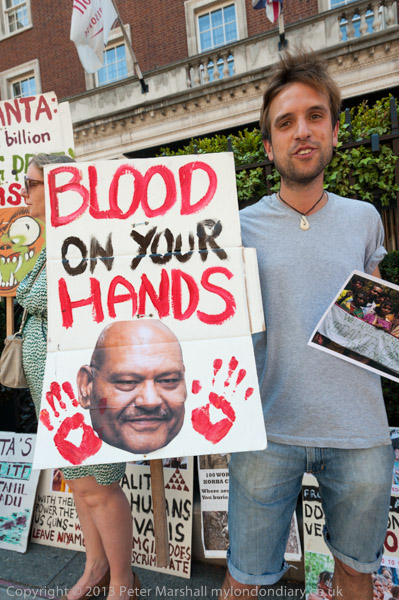
From that protest I moved on to the corner of Grosvenor Square and the London Marriot Hotel, where the mining company Vendanta was holding its AGM. I’d earlier been reading on-line a major Indian newspaper article about a protest in India the previous day in support of the forthcoming London protest. Vedanta’s crimes (or attempted crimes) against the environment hardly make the news here, but are front-page in India and important in the other countries where Vedanta operates.
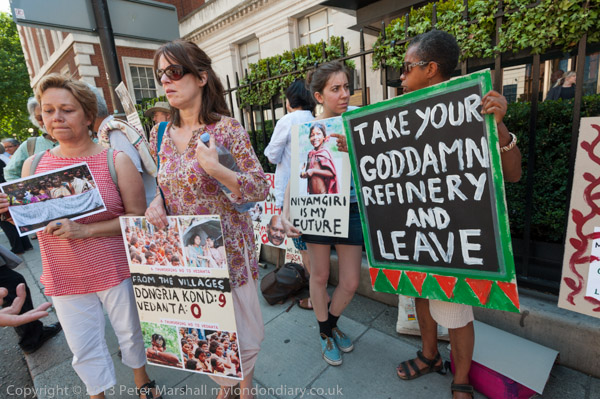
‘Take your goddamn refinery and leave’ was a quote from Arundhati Roy which made the front pages in India
This year the annual protest at the AGM by Foil Vedanta was both a protest and a celebration, as Vedanta’s plans to destroy the Nyamgiri mountain sacred to the Dongria Kondh tribal people in Orissa do appear to have been foiled. The Indian Supreme Court had decided that Vedanta’s proposal had to be supported by the local village councils, and the news on the day of the protest was that the ninth of twelve councils had rejected it. The court is expected to confirm their decision later this year.
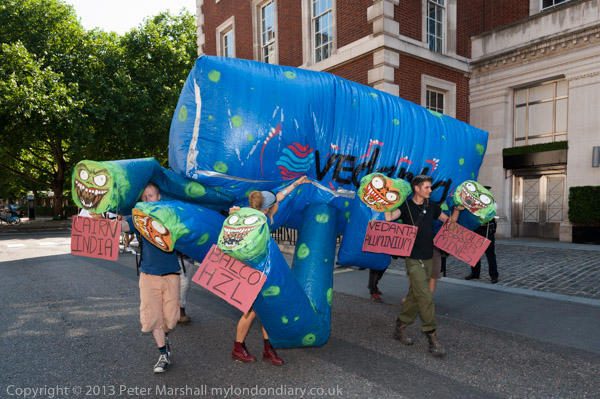
The Vedanta monster arrives to join in the protest
As well as protesting, a number of those opposed to Vedanta’s ecological and human rights crimes have also become shareholders, entitling them to attend the AGM and to raise questions about the companies activities. The revelations about its activities have also led some major shareholders to disinvest.
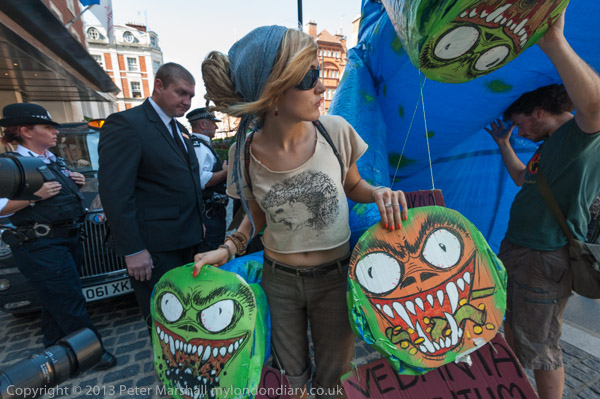
Police and hotel security object as the Vedanta monster invades the hotel forecourt
Photographically there were a couple of problems – bright sun and police. The lighting contrast was extremely high, with a virtually clear blue sky, and often parts of a picture were in full shade and others in bright sun. Of course fiash can help to equalise things when – as in many of these pictures – the shaded areas are closer to the camera. It also helps with the large difference in colour temperature, with the blue sky providing the light in shaded areas and the much warmer sunlight. But working with two cameras, the D700 and D800E, I have a small problem as I only carry one SB800 flash gun. I can move it from one camera to the other, but often there just isn’t time to do so.
The instruction manual for the flash tells you that you should turn off flash and camera before putting on or removing the flash, but I don’t seem to have had any problems when I forget this precaution, but even so it takes a little time. In a hurry its also rather easy not to quite push the flash fully into place on the shoe – when it usually doesn’t work properly, but can sometimes still fire – and to forget to lock it in place. Though it is still held fairly firmly, when you are moving around and being fairly active the flash can then fall off, often with rather expensive consequences. Experience tells me that they don’t bounce well on concrete.
Auto white balance also has problems in mixed lighting, which is hardly surprising. Shooting on raw this isn’t a great problem, but does mean a little more fiddling in Lightroom. Sometimes to get the best results I also have to make use of the colour temperature correction possible with the adjustment brush in Lightroom, as will as using it to lighten the dark areas (and often increasing their contrast as well) and darkening the light parts.
Police have a balancing act in situations like this, wanting to allow people to go about there normal business as well as allowing legal protest. It’s often difficult and sometimes I think they get it a little wrong, as at times they did here. They also sometimes have some odd ideas about there own operational needs, and don’t always understand the needs of photographers.
There was a rather narrow pavement with a line of protesters along it, and the police keeping the pavement clear, but also objecting when I stood in the gutter of the road to take pictures. It wasn’t a busy road, and it would have made sense to cone half of it off to allow the protest and photography to take place rather than being obsessed over traffic flow.
________________________________________________________
My London Diary : Buildings of London : River Lea/Lee Valley : London’s Industrial Heritage
All photographs on this and my other sites, unless otherwise stated are by Peter Marshall and are available for reproduction or can be bought as prints.
To order prints or reproduce images
________________________________________________________
